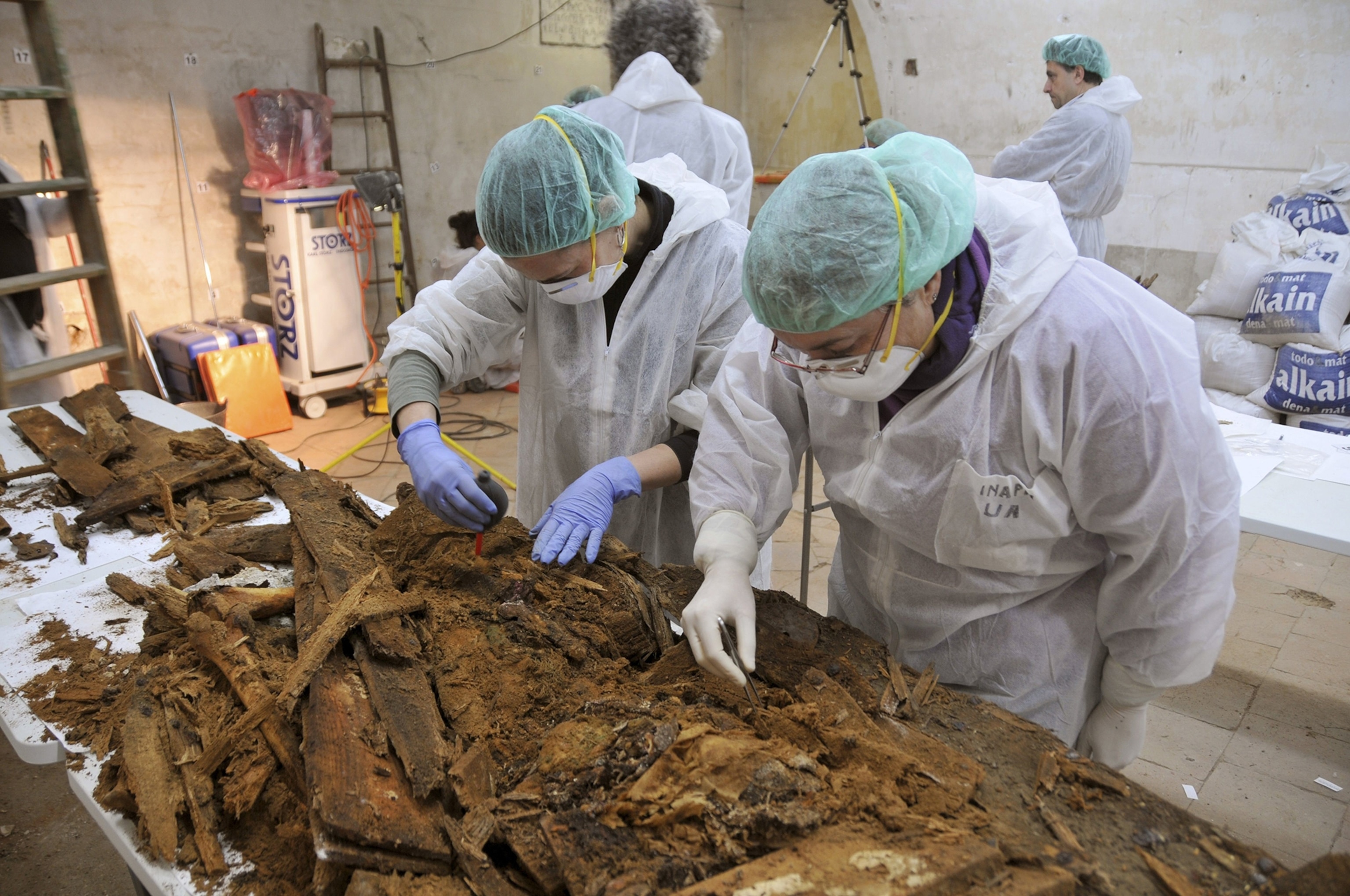
Lost Tomb of 'Don Quixote' Author Cervantes Found in Madrid
Writer’s colorful life included capture by pirates.
Researchers in Spain announced Tuesday that they believe they have discovered the 400-year-old remains of the great Spanish novelist Miguel de Cervantes beneath Madrid’s Convent of the Barefoot Trinitarians.
The author of the vast and playful mock-epic The Ingenious Gentleman Don Quixote of La Mancha, Cervantes is widely considered the founder of the modern novel.
While a definitive identification has not been made, forensic anthropologist Francisco Etxeberría told a news conference that his team was convinced Cervantes’s bones were among the skeletal remains found in a tomb with the bones of 15 other people. Historical documents indicate that Cervantes was buried beneath the church, but a late 17th-century expansion of the structure resulted in the transfer of certain burials, and the location of his remains was not marked.
Ground-penetrating radar scans conducted last April revealed the likely presence and location of burials beneath the modern church. After conducting excavations, a team of 30 researchers has discovered the remains of 240 burials. The age of bones and clothing in one tomb is consistent with a date from the early 17th century, and Cervantes died in 1616, when he was 68.
At the age of 24, Cervantes was shot three times by Turkish troops at the 1571 Battle of Lepanto. A bullet broke the radius and ulna of his left arm, and he never used it again. Evidence of injury and atrophy might be apparent in the remains, but researchers have not reported that any of the skeletal evidence shows signs of the trauma Cervantes sustained. The bones were probably either too poorly preserved or lost during the reburial in the late 17th century.
Genetic evidence from a bone fragment could provide a more conclusive identification, but researchers do not know of any living descendants of Cervantes. His sister is thought to be buried near Madrid, so a sample of her DNA could provide a match. But it’s not yet clear whether an exhumation will be permitted or whether the remains would yield a testable sample.
Cervantes led a long and colorful life; he fathered an illegitimate daughter, spent time in debtor’s prison, and was captured by Barbary pirates in 1575. The pirates held him captive for five years, and his ransom money was raised with the assistance of the same convent beneath which he is probably buried. He requested to be interred under the convent to show his gratitude to its Order of the Most Holy Trinity for the Redemption of the Captives.
The 400th anniversary of Cervantes's death will be in 2016, and it’s likely that the crypt will be open to the public by that date. The discovery of his remains has yet to yield any new or surprising biographical information, but it’s a reminder of a truth that Don Quixote’s sidekick, Sancho Panza, expresses well in Cervantes’s novel: “Well, there is a remedy for all things but death, which will be sure to lay us flat one time or other.”